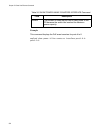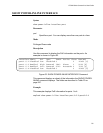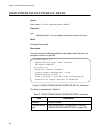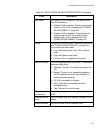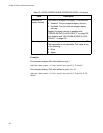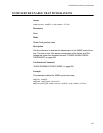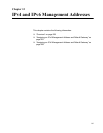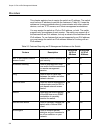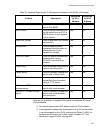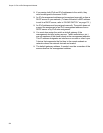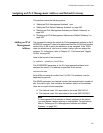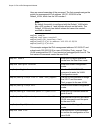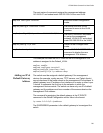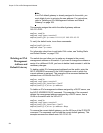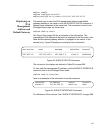
Chapter 13: IPv4 and IPv6 Management Addresses
258
Overview
This chapter explains how to assign the switch an IP address. The switch
must have an IP address to perform the features in Table 26. It uses the
address as its source address when it communicates with other network
devices, such as TFTP servers, and Telnet management workstations.
You may assign the switch an IPv4 or IPv6 address, or both. The switch
supports only one address of each version. The switch can support all of
the features with an IPv4 address, but only a subset of the features with an
IPv6 address. To use features that are not supported by an IPv6 address,
you must assign the switch an IPv4 address instead of or along with an
IPv6 address.
Table 26. Features Requiring an IP Management Address on the Switch
Feature Description
Supported
by IPv4
Address
Supported
by IPv6
Address
802.1x port-based network
access control
Used with a RADIUS server for
port security.
yes no
Enhanced stacking Used to manage more than
one switch from the same local
or remote management
session.
yes no
Ping Used to test for valid links
between the switch and other
network devices.
yes yes
RADIUS client Used for remote management
authentication and for 802.1x
port-based network access
control.
yes no
RMON Used with the RMON portion
of the MIB tree on an SNMP
workstation to remotely
monitor the switch.
yes no
Secure Shell server Used to remotely manage the
switch with a Secure Shell
client.
yes yes
sFlow agent Used to transmit packet
statistics and port counters to
an sFlow collector on your
network.
yes no



